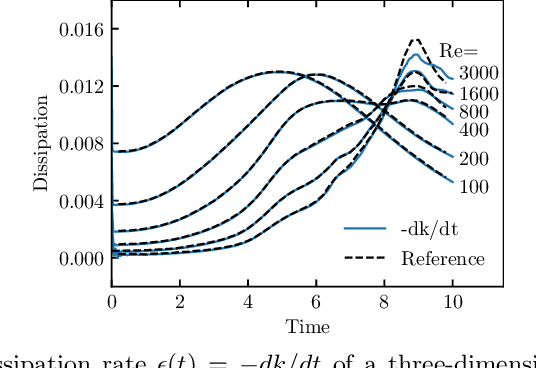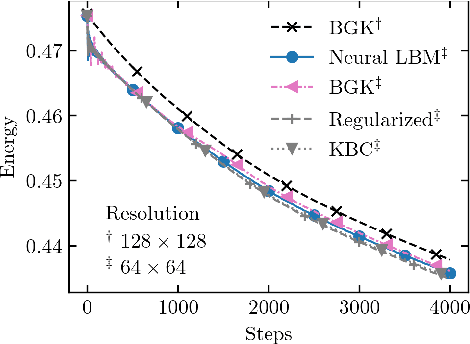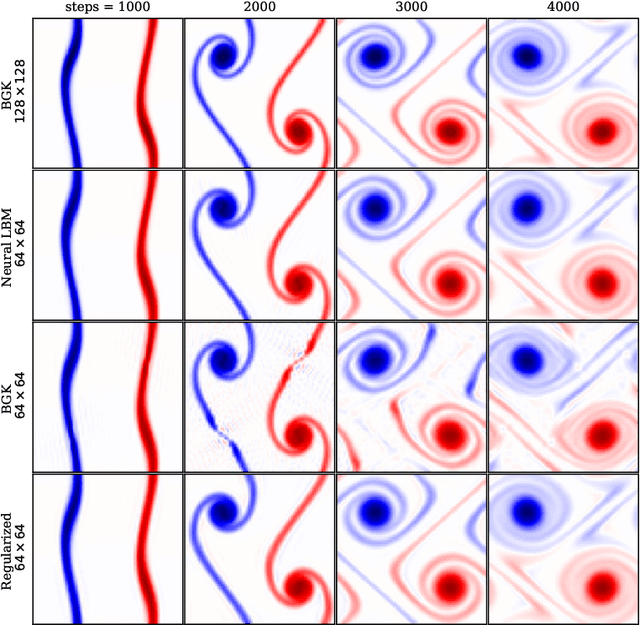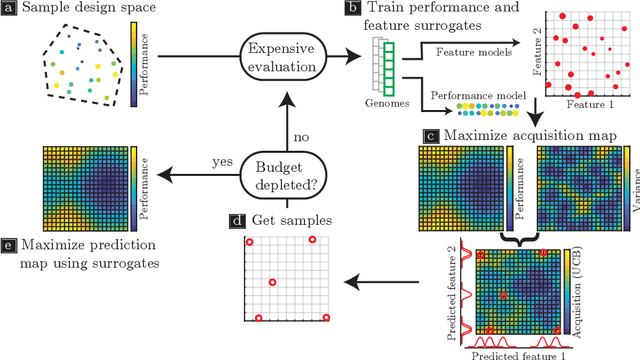Dominik Wilde
Efficient Quality Diversity Optimization of 3D Buildings through 2D Pre-optimization
Mar 28, 2023Abstract:Quality diversity algorithms can be used to efficiently create a diverse set of solutions to inform engineers' intuition. But quality diversity is not efficient in very expensive problems, needing 100.000s of evaluations. Even with the assistance of surrogate models, quality diversity needs 100s or even 1000s of evaluations, which can make it use infeasible. In this study we try to tackle this problem by using a pre-optimization strategy on a lower-dimensional optimization problem and then map the solutions to a higher-dimensional case. For a use case to design buildings that minimize wind nuisance, we show that we can predict flow features around 3D buildings from 2D flow features around building footprints. For a diverse set of building designs, by sampling the space of 2D footprints with a quality diversity algorithm, a predictive model can be trained that is more accurate than when trained on a set of footprints that were selected with a space-filling algorithm like the Sobol sequence. Simulating only 16 buildings in 3D, a set of 1024 building designs with low predicted wind nuisance is created. We show that we can produce better machine learning models by producing training data with quality diversity instead of using common sampling techniques. The method can bootstrap generative design in a computationally expensive 3D domain and allow engineers to sweep the design space, understanding wind nuisance in early design phases.
Lettuce: PyTorch-based Lattice Boltzmann Framework
Jun 24, 2021



Abstract:The lattice Boltzmann method (LBM) is an efficient simulation technique for computational fluid mechanics and beyond. It is based on a simple stream-and-collide algorithm on Cartesian grids, which is easily compatible with modern machine learning architectures. While it is becoming increasingly clear that deep learning can provide a decisive stimulus for classical simulation techniques, recent studies have not addressed possible connections between machine learning and LBM. Here, we introduce Lettuce, a PyTorch-based LBM code with a threefold aim. Lettuce enables GPU accelerated calculations with minimal source code, facilitates rapid prototyping of LBM models, and enables integrating LBM simulations with PyTorch's deep learning and automatic differentiation facility. As a proof of concept for combining machine learning with the LBM, a neural collision model is developed, trained on a doubly periodic shear layer and then transferred to a different flow, a decaying turbulence. We also exemplify the added benefit of PyTorch's automatic differentiation framework in flow control and optimization. To this end, the spectrum of a forced isotropic turbulence is maintained without further constraining the velocity field. The source code is freely available from https://github.com/lettucecfd/lettuce.
Designing Air Flow with Surrogate-assisted Phenotypic Niching
May 10, 2021



Abstract:In complex, expensive optimization domains we often narrowly focus on finding high performing solutions, instead of expanding our understanding of the domain itself. But what if we could quickly understand the complex behaviors that can emerge in said domains instead? We introduce surrogate-assisted phenotypic niching, a quality diversity algorithm which allows to discover a large, diverse set of behaviors by using computationally expensive phenotypic features. In this work we discover the types of air flow in a 2D fluid dynamics optimization problem. A fast GPU-based fluid dynamics solver is used in conjunction with surrogate models to accurately predict fluid characteristics from the shapes that produce the air flow. We show that these features can be modeled in a data-driven way while sampling to improve performance, rather than explicitly sampling to improve feature models. Our method can reduce the need to run an infeasibly large set of simulations while still being able to design a large diversity of air flows and the shapes that cause them. Discovering diversity of behaviors helps engineers to better understand expensive domains and their solutions.
 Add to Chrome
Add to Chrome Add to Firefox
Add to Firefox Add to Edge
Add to Edge